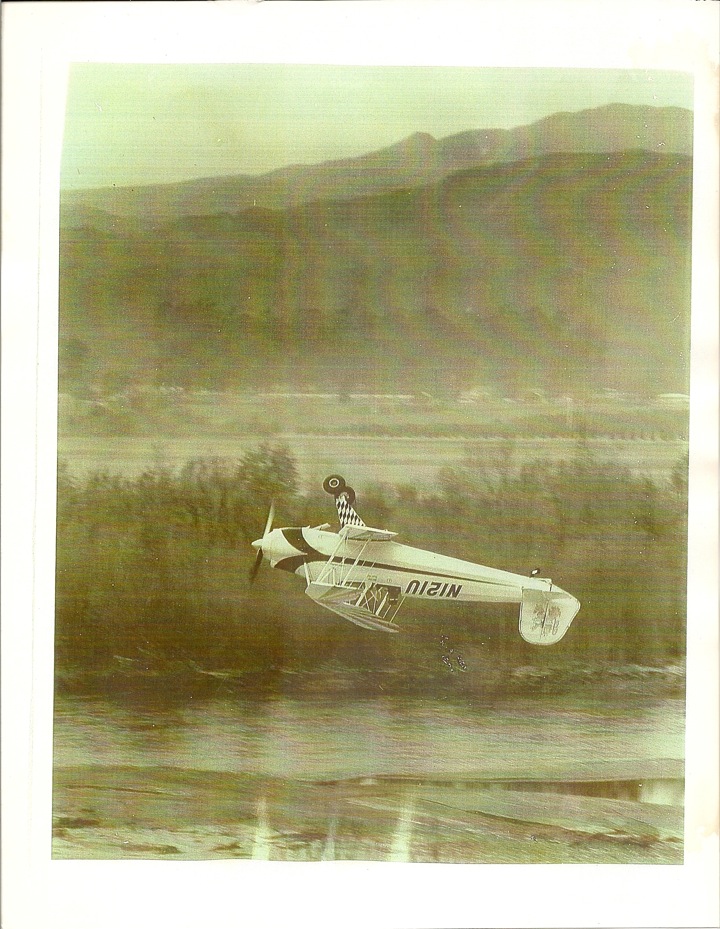Interesting anecdotes from Bucker history
- Written by: Administrator
Since then I have flown quite a few Sukhois, and yesterday I ferried one from Long Island, New York to Virginia. Funny thing is, after flying the Jungmann every day this week, the Sukhoi felt like a truck. Its controls were heavy and poorly balanced. It landed as easily as a Cherokee, however. Everything really is relative.
It is hard to believe, but next week it will be one year since N28Bu made its first post-restoration flight. Harder still to believe that in all that time I have flown it for only 15 hours. A cold winter, a terribly wet summer, a far longer than expected propeller finishing, and a busy work schedule are to blame.
Today though, I rather made up for it.
Ferrying the Sukhoi was tiring work, but I got up early this morning, took a shower and headed for the airport. The sky was blue, the winds perfectly calm and the temperature a pleasant 70 F (20 C) or so. I pushed the Jungmann out of the hangar and gave her 15 gallons of 100LL as a treat. (She usually drinks unleaded auto fuel)
There has been remarkably little maintenance to do since that first flight. I installed an oil cooler, reworked the oil tank breather line to prevent oil loss, and replaced the left landing gear strut oil seals three times. - I pinched the O-ring the first two times. Other than that, nothing. To my constant amazement, everything has just worked. Even my fuel system, the electric supercharger actuator, and my homebrew radio have worked without a hitch.
The newly finished "Performance" propeller gives about 2500 RPM on climb out, and a pleasing rate of climb. In just a few moments I was at 1,500 feet, and turned to the Northeast, setting off across Ohio towards Ashland County airport where there was a "Pie in the Sky" fly-in today.
At 1,500 ft, with 93 kts on the GPS and that smooth LOM engine purring away up front it was magical. The trees are starting to turn colors of red, orange, and yellow, and with the harvesting machines starting their annual task of bringing in the field corn and the wheat, there were convenient little runways all over the country side. Not too much worrying about a place to land today!
After the first few flights last year I made one slight rigging change, after which the Jungmann has flown straight and level. Today, with no wind at all, I put that to the test. I took my hands off the stick and let the Jungmann fly herself while I drank in the stunning views. 56 NM later, I had not once laid a finger on the stick. Just a nudge from a toe had been enough to keep her on course.
When I landed (twice - I need another few degrees of up elevator) and shut down, people came out of the airport building to meet me. "My God" one person said. "Don't tell me. Is that what I think it is, the real thing?" Don't you love it when people recognize a Bucker, rather than saying "What's that - a homebuilt?"
Inside there was hot coffee, many types of handmade fruit pie, and vanilla ice cream to be had. What a life.
After an hour or so I took off, allowed the Jungmann a little fun over the airport to say thank you for the pie, and turned towards home. Another one hour and twenty minutes on the tach. This time we landed only once, made the first turn-off and taxied to the hangar to wipe off the bugs. - Yellow airplanes do seem to attract bugs.
As the engine ticked and cooled, I realized that this was exactly why I had built this airplane. This was the very dream that had inspired me to keep working for all that time.
I LOVE this airplane!
Steve
- Written by: Administrator
Over the next few months, I hope to publish a great deal more about Frank, but until then, please enjoy this classic picture of N87P while it used a 200 HP Lycoming O-360 engine.
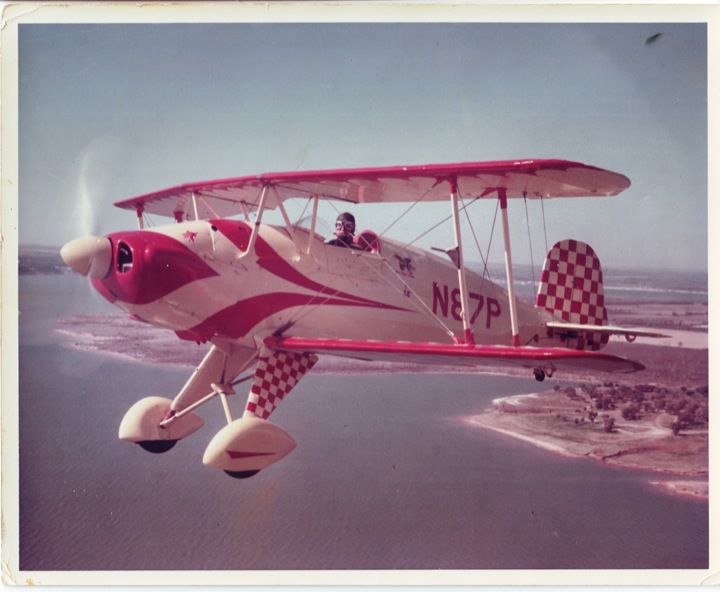
John Price shared this memory of his father's flying:
"My father would fly the airplane with minimum fuel as possible to stay as light as possible for vertical performance. The flop line in the fuel tank would get air and the engine would quit often during tail slides. If he was high enough he would dive vertically(160-200 MPH) and restart the engine. If he was to low he would dead stick down and land on the grass strip. I saw him do this many times and never once do I remember having to push the airplane to where I was sitting or standing. He always rolled right to where I was standing. I really considered this to be routine until I became a pilot a few years later then I realized how difficult this was and how easy he made it look !! "
- Written by: Administrator
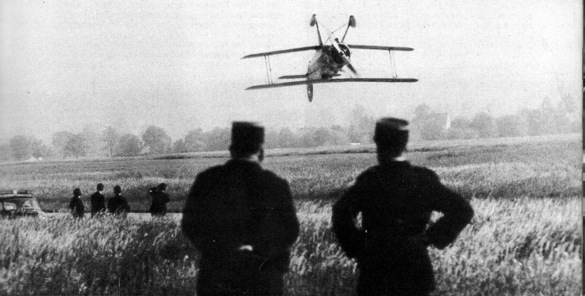
In the 1960s, he was much in demand for airshows all over Europe, and as far away as Dallas, TX. Three times in all he was a Lockheed Trophy finalist and in 1959 brought Switzerland her first resounding victory in a world-class event by winning the trophy itself, in a competition whose overall standard was rated much higher than in previous years.
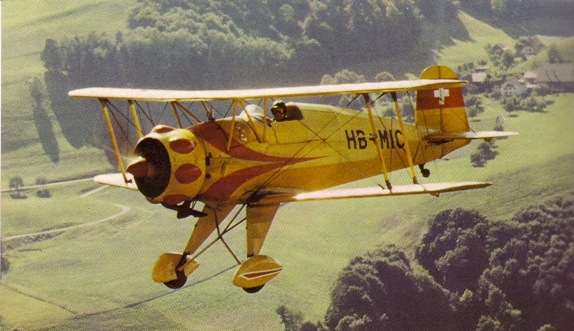
Lairdon flew his Jungmeister through a beautiful series of figures, which he put together without disruptive pauses and with a fine sense of balance, contrasting the slower moments with the more abrupt and rapid maneuvers to achieve a cohesive whole.
Hot on the heels of Lairdon came Albert Ruesch, another Jungmeister exponent. Three times national champion and the foremost aerobat of the day, he too became a regular competitor at the Lockheed Trophy competition, joining Lairdon in 1960. Albert became well known in later years for his school in Porrentruy where he turned the charming and scenic airfield into a veritable Promised Land for devotees of aerobatics. Students came from all over Europe and from the United States to train with the master.
In 1963 and 1964, Albert's middle son Hansruedi joined his father at the Lockheed competitions.
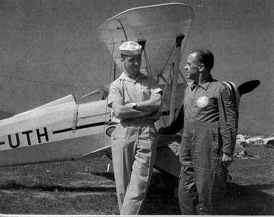
Hansruedi and Albert Ruesch
Dissatisfied with the performance of available machines, it was the Rueschs who first began an innovative trend in aerobatic aircraft which eventually had a profound influence on later events in Switzerland and Germany: by 1962 Albert had exchanged the once traditional Jungmeister for a verson of the Bu131 Jungmann, HB-UTH, which Flug und Fahrzeug Werke AG (successor to the manufacturers Dornier-Werke) had modified to operate on a 170HP Lycoming engine.
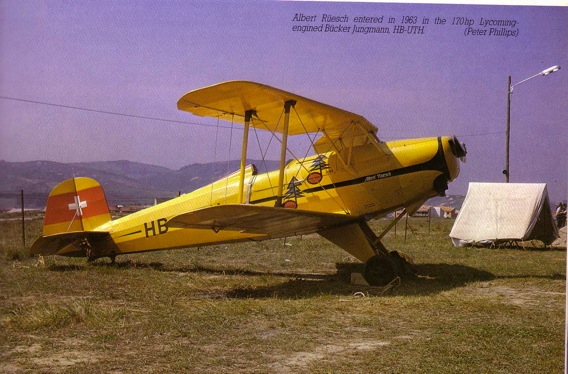
The Bucker R-170 HB-UTH
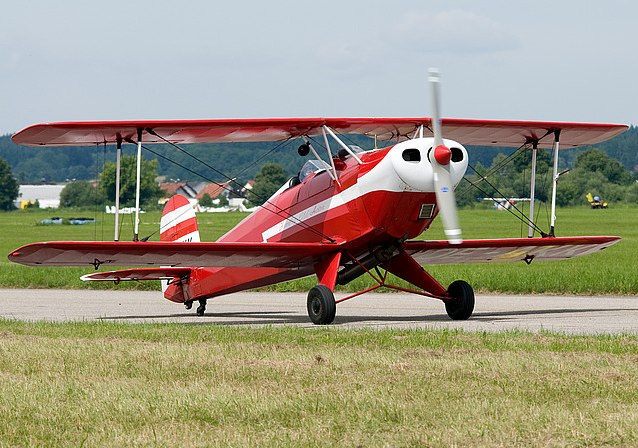
Bucker R-180 "Lerche"
- Written by: Administrator
You will find the article in the Downloads/Magazines section, or can go directly to it by clicking the image below. - But you need to logged in.
I wrote the piece below on the 28th February during a rainstorm,
it has been terrible weather for some time; in fact most of the month had been abysmal.
Monday 01st March, wow unbelievable, the sun is out, the sky is blue, the wind calm.
Am I dreaming, nope.
Goodwood however is flooded and that means the Jungmann has to stay caged up for just a little while longer. Of course this could be just a fools gap.
On the news today, we are told that after all the the stories of bankers getting bonuses even if the bank has a gross loss.
We are now told that the Meteorological Office are to pay out a bonus of some 12 million pounds.
Apparently their forecast was looking for 20 million, well no changes there then.
Anyway here is the piece I wrote to see the mad Month of March in.
- Written by: Hermann Diebold
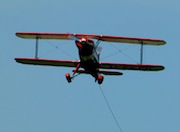 |
Year: ca 1950 Wingspan: 7.2m Power: 180 HP Max speed: 300 km/h Restored: 1980~1983 |
The beginning of the "Bücker"
1934 – although the time of the biplane had been practically over in aeronautical history – Clemens Bücker designed the legendary Bücker 131 as a two seated trainer, sports- and aerobatic plane. Some time later he also designed the single seat Bücker 133, which had a more powerful engine and has been operated very successfully in aerobatic competitions for years.
The 131 was well designed and so became a successful commercial product, one of the most successful aircraft of its class built. More than 10.000 Bü 131 have been built worldwide – even in Japan Bückers were produced under license, and they were used a trainers for young pilots.
The last serial production took place in Spain in the 1960s. Bückers were built for the training of military and airline pilots. When this period ended the buckers were disassembled and stored in a hangar near Albacete.
When trash first came to Mössingen
1977 - This is when the story of D-EEPK begins. Sigi had contact with the Spanish war ministry and heard about the possibility of purchasing the Bücker planes (or what was left of them.) In July Sigi and Wolfgang Serwatzy flew down to Albacete in the club`s Remoqueur "HI", to inspect the aircraft.
Three months later at an auction Sigi bought one plane, complete down to the last bolt, but in „trash“ condition.
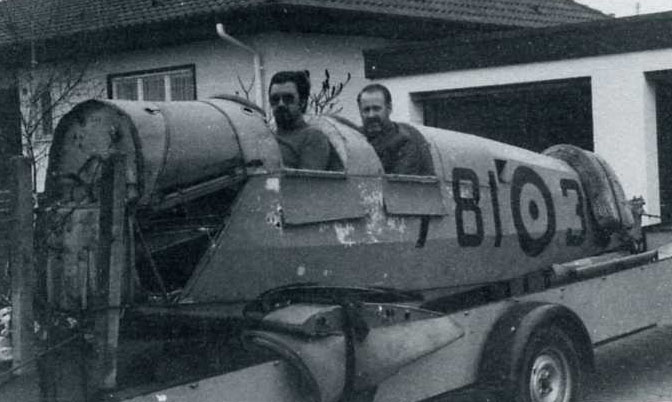
After undergoing unbelievable bureaucracy, the plane finally made its way to Germany on the trailer intended for the clubs Grob “Astir” glider. Some old guys at the airfield looked at the thing that was brought from Spain and said: “This thing will never fly again”!
Start of the restoration
Anyway, in 1980 Sigi began the restoration. After disassembling, all parts were cleaned and inspected by specialists from the German FAA. Many parts needed to be re-produced, then painted and sealed for the re-assembly of the plane.
This sounds simple but it was hard and time taking work. Many people at the airfield helped during this period of intense work on the plane. Many of them had the know-how to make this restoration project come true.
"Naked" in public
In 1982 the D-EEPK was presented to the public fort the first time, but not as it looks today. During a Bücker gathering at Degerfeld the plane was displayed, naked without fabric and without the engine. It was transported by truck, assembled there and put on display.
This was a sensation even for the Bücker specialists that gathered at Degerfeld because all planes displayed there were flying planes. One of the Bücker pilots offered an engine for sale, Sigi bought the engine and finally had all the parts needed to finish the project.
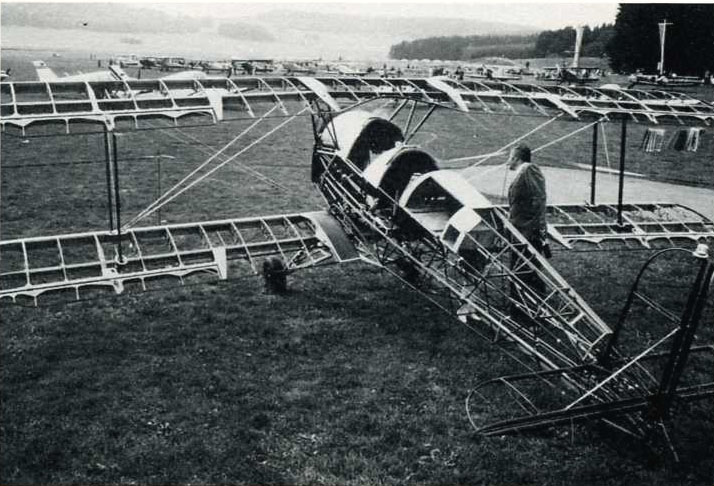
After the engine had arrived the team speeded up its work and in August 1983 the plane was finished It made its first flight at Farrenberg. Sigi was so nervous – but after a couple of minutes the LBA test pilot (German FAA) started with the first aerobatics over the field. Later joined by all the powered aircraft from Farrenberg, the Bücker was flown to Degerfeld airfield. The examiner said: “Looks fantastic and flies like a dream”.
Right after that he started training Sigi to fly his Bücker. When Sigi finished his training he flew whenever he had time and the weather cooperated.
An exciting flight 13
During his 13th flight Sigi had technical problems with the plane and he landed on a field that was used by RC planes. Sigi, with his long experience as a glider pilot managed to land the Bücker without a scratch, he said that „he was just lucky“……….
Fist time abroad
To fly all the way through Europe in an antique open cockpit biplane was something very special. The first tour lead back to the roots of the pane, to its mother country Spain. The controllers and pilots there were really amazed to see the beautifully restored Bücker and Sigi can tell a lot of stories about his trip.
During the approach to Valencia all commercial traffic up to Mirage-jets had to wait until the »Bücker Aleman« had landed safely on the 3000 meter runway. The Spanish officials insisted on housing the Bücker in one of their hangars.
Many flights over France, England, Austria and Italy made flying the Bücker a dream come true. The Bücker has also been used to tow gliders and banners.Its performance is outstanding even compared to modern planes. During her time at the Farrenberg the Jungmann flew for more than 700 hours.
At every airshow on nearby airfield the Jungmann is always present and does aerobatic displays. In this way, interested visitors may take part in the history of great aircraft that were designed and built many, many years ago. A lot of them have been inspired to work on vintage planes, learn about their history, some even started their own restoration projects.
We know that everyone that had the privilege to be invited to fly in a Bücker aricraft will never forget how good it feels. Their joy is our joy too.
Second restoration
From fall 2004 until April 2009 the PK was completely restored again. Since April 25, 2009 Sigi and his partner "Buddy" Heinz Peter are back in the air over Farrenberg and do their aerobatics over the Hohenzollern castle.
The white Bücker D-EEGN: Bü 131, C.A.S.A. 1.131E – Serie 2000
 |
Year: ca 1950 Wingspan: 7.2m Power: 120 HP Max speed: 300 km/h Restored: 19801 |
Since the early 1990 another Bücker Jungmann is in the air over Farrenberg. Gert Bender, a former motor cycle race champion, restored his Casa Bücker to perfection and became another member of the Bücker family.
- Written by: Richard Bach
Richard wrote this article about Mira and his famous escape from soviet occupied Czechoslovakia. Click on the image below or go to the Downloads section of this website to view it.
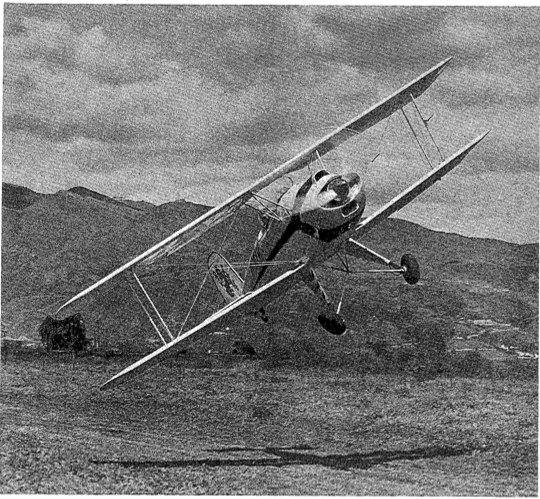
In addition to the fame he earned as an author, and as the creator of Jonathan Livingstone Seagull, Richard Bach may be a distant descendent of the composer JS Bach. He now lives in New Zealand.
- Written by: Rick Wenger
On July 7, 2009, to the day 70 years later, the Emmen Air Force Base staff organized a small anniversary celebration, primarily for the personnel stationed at the Air Base, but with some dignitaries from the regional authorities invited. As a surprise to the invitees, just after the welcome address of the Air Base Commander, a Jungmann landed on Emmen's cross runway, stopping in front of the crowd. It was –of course- a Do/Bü-131B, HB-UUE or "A-15", exactly in the same livery (except for the tail No.) as the Jungmann seventy years previous. My son Marc, dressed just as one of the pilots in original leather trousers (stamped with the year of manufacture "1929"!) and a leather overcoat and me in the full leather flight suit dressed like the other pilot, were greeted by two kids in contemporary folkloristic clothing with bunches of flowers. The Commander of the Swiss Air Force, Lt Gen Mark Gygax, as well as the Emmen Air Base Commander, was also there to welcome us. Later on, the Swiss Air Force jet formation team, the "Patrouille Suisse" gave a demonstration, the initial low pass over the spectators in tight formation with the Breitling Super Constellation.
All in all a memorable event, with the re-enactment quite well succeeded, when the 2009 photos are compared with the black & white 1939 shot."





- Written by: Bob Pfaff
It happened that I had flown the farthest, so I was. awarded about fifteen minutes of fame and glory, to which I responded with proper modesty and a minimum of swagger, and then enjoyed two days of unadulterated Bucker talk. I got a little unexpected dividend when I met some retired airline pilots who had some beautifully restored classics hangared there; Cabin Wacos, Stagerwings, Howards, etc.. Their hangars have all the comforts of home, and these people were perfect examples of the way pilots should grow old gracefully.
Any EAAer who gets anywhere near Santa Paula should drop in and see them and their planes. I’m sure you’d be made as welcome as I was. When I left I gave Joe (Krybus) a list of the items I wanted taken care of, and I told him that as I left the plane was his, and to use his own judgment about anything else he saw that needed fixing. There are still a few people around I would trust this way, and Joe is one of them. It took him about a month to get the plane up to his standards, and I used the time to figure out a new route home
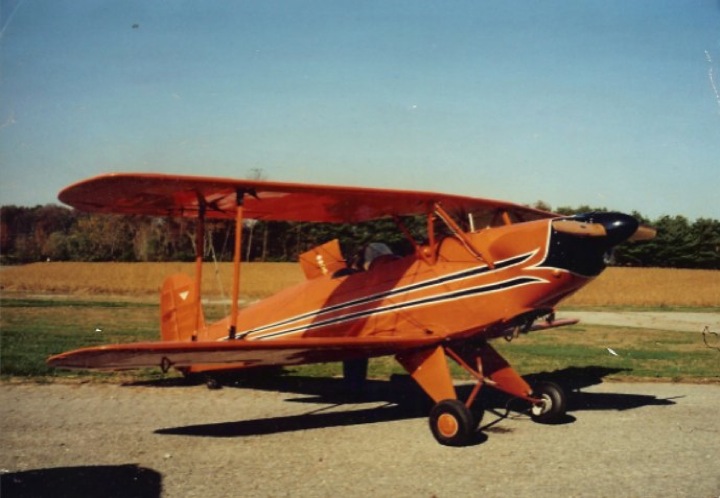
- Written by: Administrator
Largely I'm sure due to the influence of Frank Price, North Central Texas has always been a hotbed of Bückering. Frank founded the American Tiger club and made available drawings for his "American Jungmeister". Aircraft were built from those by Jim Swick, of Swick T'craft fame, and by Sam Burgess amongst others. Sam's Jungmeisters were made famous in many ways: He flew one on a trip to all 50 states,
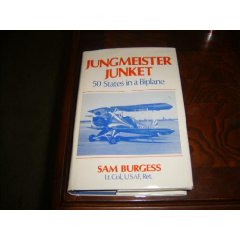
then he equipped it with an Allison turbine engine and set some time to climb records in it, finally he made the first Vendenyev M14P installation in a Bücker. He was obviously of the "Too much power is almost enough" school of thought.

Recently, I was lucky enough to receive some correspondence from Ben Morphew, (who I used to watch performing in the McKinney airshows when I lived in Dallas in the early 1980s. Quite the best Pitts performance I have ever seen.) Some of that is reproduced below.
Remember to click the Read More link at the bottom to see the whole story!
Steve,
The M 14P model was built by Jim Swick not Sam Burgess. Sam built the other one and later took off the M 14P and put some kind of turbine engine in it or maybe it was the other way around. As far as I know Jim did not have anything to do with Sam's stuff.
The airframe that Jim used to build the M 14P version was originally built for a guy in Houston, Warren Sibira. Warren had a pretty well equipped machine shop but never got around to finishing his Bucker. After Warren died Jim got the parts that had already been built and built it up specifically for the Russian engine. At the time I was putting together those 3 Sukhoi's for Tom Dodson. The final plane got caught up in the moratorium and Jim pulled a mold off of the Sukhoi nose bowl.
Sam Burgess actually built 2 Jungmeisters from what I remember. The first one was the one he flew to all 50 states because he built the thing in Hawaii!!!! That one had a 185 Warner in it.
I think he built the second one with the turbine in it first for some time to climb records and then took the turbine off and put the M 14P on it.
He and Swick were good friends and I'm sure there were construction and ''how to'' conversations but Sam was pretty much on his own.
I've never seen Frank's original drawings but Jim came by the hangar last week and I asked him how many times he went to Waco from Dallas and he said they at least wore out one set of tires during the process!
I was wondering what the Bucker Community thought of these planes but if you look at it closley you'll see just how accurate they are. They could have taken a lot of short cuts but Swick said ''Hell, then it wouldn't be a Bucker" so that kind of gives you the mind set of these guys back then.
The Lycoming engine choice was a no brainer because even in 1972 Warner parts were hard to find. Years ago I took some pictures and measurements of the Krier Kraft and there was this little platform (actually a cut off piece of Stearman foot runner). I couldn't for the life of me figure out what it was but I looked back into the fuselage and Harold's fiberglass poles were still back there that he used for the inverted ribbon cut.
After I got home I called Charlie Hillard ( this was around 1993 ) and told him about the trip to the museum. He got a kick out of the story and couldn't believe the fiberglass poles were still there. I finally asked him what the heck was that little platform between the rudder pedals and he said "That was for a complete Warner cylinder with the valves and everything. We were working those Warners pretty hard and we'd plan on popping a cylinder right in the middle of the air show season so we just carried a spare." He went on to tell me that he could probably remove and replace a Warner cylinder as fast now as he could in the 70's.
Did the American jungmeisters have the same stepped down longerons that the originals did?
I haven't measured it but there's different size tubing all over the fuselage.....the tubing in the rear looks like 1/1 or 5/8 and on the firewall there are hefty tubes and then smaller ones. The forward longerons in the fuel tank area look like 7/8th but I've never put a caliper on them.
Knowing Swick the way I do, if the longerons stepped down three or four times I'm sure he did it that way. I was surprised they went as far as they did in the wings with the driven steel rivets, the flanges on the flying wire attach points, and the pins to attach the wings instead of bolts.
Never having flown a ''real'' Jungmeister I'm really not the one to make comments about the flying qualities but I do know one thing, when Frank flew the first one with the 2412 airfoil he wanted his wings modified right then so I guess that says something for the flying qualities of the Swick airplanes. I think I told you this but one of the guys at Braniff, Ed Meier, had some airfoil plots on paper with the same chord lengths and over laid the Bucker airfoil with the 2412 and it was almost identical except for the slight convex bottom of the 2412. Swick built some steel ''profiles'' so John Nyquist could add on thicker cap strips on top of the original ribs and use the steel profiles to plane down the cap overlay to match the 2412 bottom curve.
I've flown mine now for about 5 hours and it feels like the inverted attitude is pretty flat. Some of the old movies on the web site and Bevo Howard's son's web site show a considerable amount of forward stick when the original ones are flying inverted. I'm definitely not disappointed in the way this thing snaps. The only ''original'' Bucker around my area is David Martin. I think he even has the Seimens in it too. Maybe he and I will swap off sometime.
- Written by: Administrator
Mike sent me lots of pictures and we corresponded over the course of a few weeks. The results are reproduced here with his permission. Some of the pictures Mike provided are reproduced below, many others are included in the picture gallery organized in "Michael Parker Stow Collection " Be sure to click the "Read More" link at the bottom of this introduction!
I owned 1001(GAXNI) 1971-1978,and 11(GAXIH)1979-1983. When Mike Coburn flicked XNI into a Piper Carribean in 1970,Maurice Robinson convinced me it could be rebuilt. Having been friendly with Tony Bianchi for some time,and looked over and flown Tom Rose's GAXMT, I decided to get it. I displayed it as well as Military Aircraft , until the late 70s.
Woodson K Woods was over for the Blackbushe Airshow,I think'78? He persuaded Doug Arnold to sell him SL721 Mk16 Spitfire,and when he saw my Display in the Bucker,he wanted that as well. Woody crashed it, apparently trying a go around, and it torque rolled into the ground. Woody I was told, had to be cut out,and never flew it again. I think he put it in Doug Champlin's Museum in Phoenix. On your other site I find that Steve Craig now owns it. I have emailed him, since I have loads of Photos of both XNI and XIH, which no one would have seen from that era.
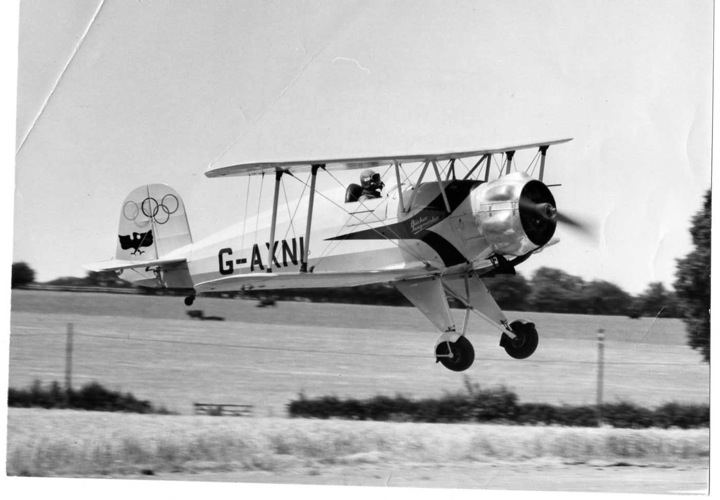
XNI was the 1st Production Airframe built at Rangsdorf. Unfortunately I did not realise this, since all the paperwork from Roersch was exSwiss Air Force and referred to Dornier Airframes only. It was only after Paul Skogstadt and John Underwood saw it, that it was confirmed by them as to its birthplace!! Also it had been with the German Team in 1936 Olympics at Berlin, as the spare Aircraft. It was loaned to a Swiss Pilot, Hars Horling,who was not placed, but was regularly flown in practice by Hagenberg. My Boss at the time,P ete Sheppard of Sea Fury fame, said we should have another Jungmeister, so we sold our Zlin 526 GAWPG to poor old Roy Legg, who killed himself in it, 7 years to the day that his mentor Neville Browning had killed himself in a 326 Zlin at the same Air Display at Seething, Norfolk.
We had bought GAXIH from Roy in part exchange, which Roy had bought from Neville Browning in the batch of 4 Aircraft he acquired from Albert Roersch in 1969-G AXNI, G AXIH, G AXMT, GAYSJ. The lucky owners of the first examples in UK of this magnificent aerobatic aircraft were in sequence-Mike Cobur!n, Roy Legg, Tom Rose, James Gilbert. When Pete Sheppard had to go the the Air Force at Chivenor to help train Hawk Pilots (Falklands was on ), he could no longer fly XIH, so it was sold in 1983 to the Regensberg Museum, where I think it remains. Incidentally it was flown to Germany from White Waltham by an Ex FW190 Piolt in his late 60s, Hubert Hahne. When we bought a Brand New wax coccooned BMW Built Seimens from Roersch, I got to fly at Grenchen a Lycoming Jungmann, HB UTH. Does this still exist? It was beautiful to fly, as it had a 180 Lycoming with full inverted oil/petrol system. It had more streamlined wing leading edges as well.
Regards Mike Stow,now retired after 42 years of Flying.
What a wonderful information. Thank you so much for sharing this with me. It is exactly the type of information that Bucker owners cherish so I would like to confirm that it is OK for me to publish this on the Bucker website.
It seems that HB-UTH still exists and is current on the Swiss register of civil a/c. - Let me see what else I can find out about it.
Thanks again for the wonderful provenance.
Steve



